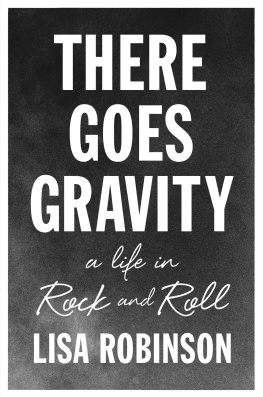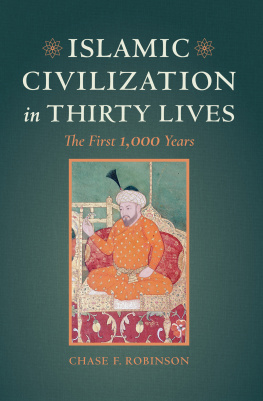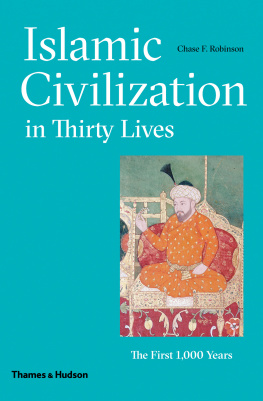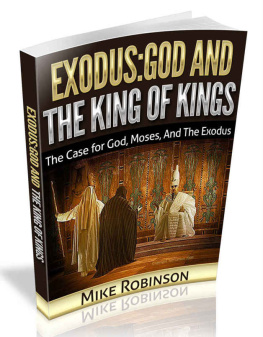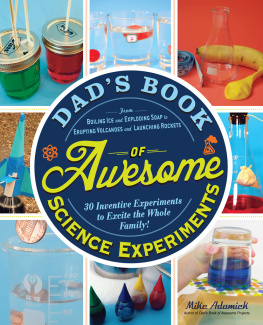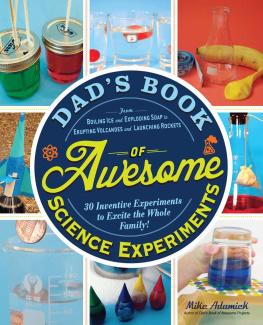THE EVERYTHING KIDS SCIENCE EXPERIMENTS BOOK
Boil ice, float water, measure gravity challenge the world around you!
Tom Robinson

Copyright 2001, F+W Publications, Inc.
All rights reserved. This book, or parts thereof, may not be reproduced in any form without permission from the publisher; exceptions are made for brief excerpts used in published reviews and photocopies made for classroom use.
An Everything Series Book.
Everything and everything.com are registered trademarks of F+W Publications, Inc.
Published by Adams Media, an F+W Publications Company 57 Littlefield Street, Avon, MA 02322
www.adamsmedia.com
ISBN 10: 1-58062-557-6
ISBN 13: 978-1-58062-557-9 (paperback)
ISBN 13: 978-1-60550-596-1 (EPUB)
Library of Congress Cataloging-in-Publication Data
Robinson, Tom, (Tom Mark).
The everything kids science experiments book / Tom Robinson.
p. cm. (Everything series)
Includes index.
ISBN 1-58062-557-6
ISBN 978-1-60550-596-1 (EPUB)
1. Science Experiments Juvenile literature. I. Title: Kids science experiments book. II. Title. III. Series.
Q164 .R625 2001
507.8 dc21
2001041276
This publication is designed to provide accurate and authoritative information with regard to the subject matter covered. It is sold with the understanding that the publisher is not engaged in rendering legal, accounting, or other professional advice. If legal advice or other expert assistance is required, the services of a competent professional person should be sought.
From a Declaration of Principles jointly adopted by a Committee of the American Bar Association and a Committee of Publishers and Associations
Cover illustrations by Joseph Sherman.
Interior illustrations by Kurt Dolber. Additional contributions by Kathie Kelleher.
Puzzles by Beth Blair.
Series editor: Cheryl Kimball
Puzzle Power Software by Centron Software Technologies, Inc. was used to create puzzle grids.
See the entire Everything series at everything.com.
Note: All activities in this book should be performed with adult supervision. Likewise, common sense and care are essential to the conduct of any and all activities, whether described in this book or otherwise. Without limitation, no one should EVER look directly at the sun, as blindness could result. Parents or guardians should supervise children. Neither the author nor the publisher assumes any responsibility for any injuries or damages arising from any activities or outings.
DEDICATION
For Matt and Megan

CONTENTS
ACKNOWLEDGMENTS
I would like to express my deep gratitude to Amy Biddle and her chemistry classes at Pinkerton Academy in Derry, New Hampshire, for reviewing my manuscript and experiments. I am also indebted to Vince Howard and the science department at Kentridge High School, Angie Lavine, Sara Dacus, and Jeff Renner at KING-TV for suggesting experiments, verifying the accuracy of the science concepts in the book, and reviewing the manuscript. Finally, I owe a debt of gratitude to my wife, Lisa, who allowed me to turn her kitchen into a science lab so my two young scientists and I could play and discover the joy of doing spearmints as a family.
INTRODUCTION
What does it take to be a great scientist? Think of the most famous scientists you know Isaac Newton, Louis Pasteur, Albert Einstein, Thomas Edison, Pierre and Marie Curie, Stephen Hawking, and so on. What do all these people have in common? Well, for one thing, they re all very smart. In some cases they even taught themselves most of what they knew about their particular subject. In fact, Sir Isaac Newton had to invent a new branch of mathematics (calculus) just to solve the problems he was trying to do in physics. There is something else they all had in common that set them apart from the other smart people of their time their ability to ask questions.
Just having a good brain isnt always enough. To be a great scientist, you need to be able to look at a problem that hundreds, maybe even thousands, of people have already looked at and been unable to solve, and ask the question in a new way. Then you take that question and come up with a new way to answer it. That is what made Newton and the others so famous. They coupled intelligence with a curiosity that said, I want to know the answer to this. After coming up with the right questions, they discovered ways of answering those questions and ultimately became famous for their discoveries.
Cool Quotes
The important thing is not to stop questioning.
Albert Einstein

Could you be the next Thomas Edison and invent something the world has waited for, or the next Isaac Newton and answer a question no one has been able to answer? Absolutely! To do it requires something all kids have naturally and many grownups wish they still had curiosity.
This book will help you to tap into that curiosity by introducing you to five major areas of science Biology, Chemistry, Physics, the Earth and Sky, and the Human Body. You will be presented with several questions that will help you to begin thinking like a scientist. Perhaps youve asked some of these questions before; for example, why is the sky blue? Some of them will probably be new to you.
Since asking the right question is only the first step toward being a great scientist, this book will also guide you in completing the second step: the experiment. Following each question there will be an experiment that will help you discover for yourself some of the mystery and magic of science. There are three different types of experiments offered in this book simple activities you can do quickly, larger and more complex experiments, and science fair projects.
THE SCIENTIFIC METHOD
First, lets take a look at the starting point for all scientific experiments: the Scientific Method. It was made famous by an Italian man named Galileo in the sixteenth century. It is simple and will help you ask and answer many of the questions you have about science. There are five parts to the Scientific Method:
- Observe some activity in the world around you.
- Make up a possible explanation for that activity, called a hypothesis.
- Use your hypothesis to make predictions about the activity.
- Test those predictions.
- Come to a conclusion about your hypothesis and its ability to predict the activity.
Why did the young scientist bring art supplies to science class?
She wanted to draw some conclusions!
Scientists have used this method for hundreds of years to understand their world. Now its your turn!
The fun of this book lies in the fact that you can start reading just about anywhere and follow the idea as far as you like. And if this book doesnt take the idea as far as you would like to go, use your imagination and keep exploring the idea. You are invited to join this exciting journey into the world of experimental science. Welcome aboard lets begin the journey!
Can you figure out where to put each of the scrambled letters? They all fit in spaces under their own column. When you correctly fill in the grid, you will have a quote from the brilliant scientist Albert Einstein. His theories and experiments led to an entirely new way of thinking about time, space, matter, energy, and gravity!


